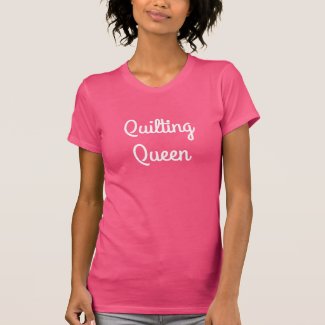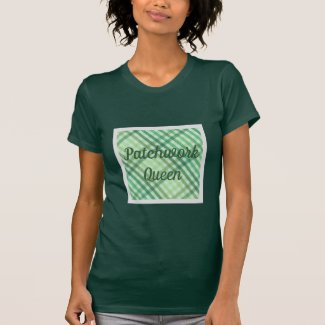Quilting group ideas: Starting one, expanding one, and quilt group activities!
A version of this article was first published in Hobby Farms Magazine
© National Lilac Publishing, LLC by Barbara Berst Adams
Thinking of starting a quilting group or looking for activities or new members for an existing one? Quilters across the country gather to work on group projects and share their own individual quilting creations.
How to start one from scratch
In the small rural town of Waldo, Ohio, quilter Sandy Till Lewis decided to chat with the owner of her local quilt shop about starting a quilting group. “She agreed to mention the possibility of a guild to several of her "regulars,” said Sandy. “This became a habit and before we knew it we had almost 30 folks through word of mouth that decided to join our group. It evolved into an evening group and also a day group that meet at her store now.”
Other ways to find potential members
Whether starting a quilting group from scratch or looking to add more members to a current one, there are other options besides partnering with a local quilt shop. Rural folks may not even have a quilt shop close enough.
Find members by teaching a one-time workshop: An experienced quilter can find new potential group members by offering a low-cost intermediate or advanced quilting class. If her town or county is large enough for a Parks and Recreation Department, she may be able to coordinate her class through them and have it advertised for free through their newsletter as well. Then, from those who inquire or show up for the class, she can start collecting the names of folks interested in forming a quilting group. (For women who live far out into the countryside, they may find that actual paid ongoing quilting classes create a nice sideline income and form of agritourism on their rural property where the students' drive to the country and rural views are part of the appeal of the quilting classes.)
Other ways to get the word out for finding quilting group members or even quilt students for a one-time workshop include: getting permission to put up fliers where potentially interested people might spend time. Fabric stores, farm and garden stores, churches, libraries, hobby stores, bookstores and craft stores, for example.
For further tips on how to safely meet new people and handle various issues in forming a new group, our article on teaching workshops from home may be of interest. Our article on starting and operating a reading club also has some overlapping points that might be valuable.
Starting small and slowly may be better than soliciting the general public to try to start off with the maximum number of quilting group members desired
It can sometimes be helpful to start a quilting group with just a core of two or three who first determine some main decisions, such as how often and when to meet, and some of the other issues that can arise discussed further below. Though the group ultimately can be flexible and change a little in the future, it can be overwhelming to start off with the sky being the limit and a dozen people all with their own agendas trying to steer the group in their favored direction. Instead, two are three can make initial decisions upfront without too much conflicting feedback from larger numbers. After those decisions are made, then other members who can comply to those choices already made can be added in.
Some decisions the first two or three can make together include:
- Will political or religious orientation determine who can join? A diversified group of many viewpoints that gets along is a wonderful idea. Having it be more than an idea can be challenging. There are people for whom the core of their lives revolve around their religion or political affiliation and they’re not able to operate in a group unless they can be openly and adamantly vocal about it whenever they deem it necessary. And for as long as they determine their opinions need to be spoken.
- Two choices to consider here: First, if an open group without a religious or political slant is desired, get to know new individual potential members first over time and assess their ability to fit in. For example, offering a quilting class as described above allows for getting to know the students before privately inviting any of them to an ongoing group. If teaching first isn’t a good fit, invite people for another type of quilt-related gathering that has a definite beginning and end, so if a trouble-making person stands out, the gathering will eventually formally finish and she won’t be invited back for a future ongoing gathering. Perhaps invite potential members to a quilt-lovers’ afternoon tea for the next three Monday afternoons, allowing people to share the history of quilting in their families, share the type of quilting they enjoy doing, and bring quilts they’d like to show and tell. Avoid hinting that this group may continue as an ongoing quilting group. Just offer it as a one-time, three Monday gathering that ends at the third Monday, to help brighten up the winter-blues or whatever reason can be given.
- The second choice is to go right ahead and allow the quilting group to be politically or religiously slanted, inviting and keeping members who stick to the belief system and making the chosen orientation clear upfront before new members join. This will help people who aren’t a social match for the group choose on their own not to join.
- How often will the group meet, and where? Some groups meet in their homes, others meet in public spaces such as churches or quilt shops.
- When meeting in homes, it’s common to suggest each member take turns hosting. But that isn’t always the best choice if there are members who find it difficult to host, but otherwise are wonderful members the group would like to hold on to. A member may live in a situation where it’s hard for many guests to safely park. She may have a grouchy husband or a disabled adult at home being watched over by someone else when she’s gone, but is always there and doesn’t respond well to guests. She may even have reasons she doesn’t want to reveal as to why she really wants to be part of the group but can’t offer to host.
- At the other end, there are people with beautiful homes who absolutely love to host for as many reasons as possible, including a quilt group. They may be happy to host every meeting, or at least more than others in the group. Instead of pressuring those who don’t want to host, or denying those who’d love to as much as possible, consider some of type exchange that allows all members to be contributors in some way that’s comfortable for them. Such as, allow the choice of either bringing finger foods/beverages to each gathering or being one of the hosts. Determine who are the hosts and who are the food and drink providers. Even a non-host on a tight budget can usually afford to contribute a bottle of sparkling apple cider, cheddar cheese cut into nice little squares with toothpicks, or a couple oranges carefully peeled and pulled apart into bite-sized sections arranged prettily on a plate.
t
- The first two or three core members may also want to decide upfront on a minimum and maximum number of members before putting people on waiting lists or soliciting new members if current members discontinue.
- Choices on numbers can be tricky. There will be gatherings where some members can’t show up because of illness or various obligations. A nice number has that “community energy feeling” even if some can’t show up, yet isn’t too overcrowded when they all do show up. The location of the meeting place can help determine the number. Meetings in a private home space might accommodate six to eight comfortably. Those that meet in larger spaces can certainly enjoy higher numbers.
- Determine upfront if liability will be an issue. In some locations, for example, homeowners can be liable for alcohol related accidents if its determined the alcohol was served at their home. Alcohol permits may also be required. So if wine or spirits are going to be served at a host's house, make sure their homeowner's insurance will cover a few guests drinking alcohol. It could be it's already covered, or it may only be covered up to a specific number of people, or not at all. There could also be more liability involved if alcohol is served to paying guests, such as those coming to a paid workshop. If there isn't the desired coverage already, some homeowners insurance companies will offer an insurance rider for a one day event that covers up to a million dollars or more for a very low one-time fee while leaving the insurance premiums for the rest of the year the same. Groups of any kind can keep the issue of alcohol in mind, also, if meeting at a public place. They need to avoid sneaking wine into the fabric store or quilt shop nice enough to allow them to meet there, as the shop owner can be liable, also.
Ideas for quilting group projects:
Quilting groups often get together to work on their own individual projects while enjoying the company and support of others with the same interest. They may share sewing techniques, have show and tells for their own individual finished quilting creations, watch a quilting how-to video together or occasionally invite an out of town expert to give a lesson.
But they may also enjoy coordinating group projects similar to old fashioned quilting bees where everyone is working on the same quilt. They may choose a cause for such a quilt for a local person or family in need, to donate as a raffle for a charity, or even to work as a group on a project one of their members wants help with. Some groups even gather to co-create quilts together for sale on a group-operated online Etsy shop. These quilts are usually special in some manner, such as being of a particular art style, reflecting a specific time period in history, celebrating an ethnic group, or perhaps the fabric and batting are all organic, or all of the fabric is from recycled clothing washed and pre-shrunk so the quilt can be machined washed easily.
Whatever their project choices, quilting groups -- just like quilting bees of long ago -- generate new and deepening friendships, and contribute to the sense of real, face-to-face community many of us in our electronic age are happy to find. “We have been a group for about three years,” said Sandy Till Lewis. “Now we are more than a quilting group -- we are best friends.”










